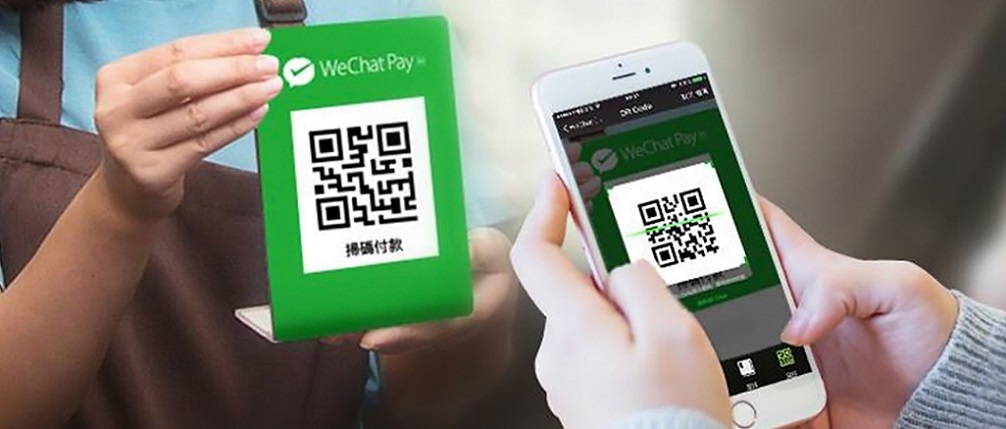
According to payment statistics in Q2 2019, as released by The People’s Bank of China, „the nation’s payment systems functioned smoothly as the size of fund flows within the economy expanded and the payment volume rose steadily”.
Bank Accounts
The number of RMB bank accounts grew steadily. At end-Q2 2019, the RMB bank accounts totaled 10.662 billion, increasing 1.96 percent qoq (quarter on quarter), a deceleration of 1.27 percentage points from the previous quarter.
Bank accounts opened by institutions totaled 64.883 million, increasing 3.17 percent qoq, representing an acceleration of 0.4 percentage points.
The bank accounts opened by individuals totaled 10.597 billion, marking an increase of 203 million or 1.95 percent qoq, with a deceleration of 1.28 percentage points from Q1 2019. The number of accounts held per capita 3 reached 7.59. ( When indicators involve per capita figures, the population applied is 1.39538 billion of mainland China at the end of 2018, in accordance with data released by the National Bureau of Statistics, similarly hereinafter.)
Bankcards
Bankcard issuance continued to increase. At end-Q2 2019, the number of bankcards in use rose 2.64 percent qoq to 7.978 billion, among which debit cards rose 2.60 percent qoq to 7.267 billion, while credit cards and debit-credit integrated cards rose 3.04 percent qoq to 711 million. The number of total bankcards per capita reached 5.72, and the per capita number of credit cards and debit-credit integrated cards recorded 0.51.
The number of bankcard acceptance terminals remained generally stable. At end-Q2 2019, 25.1748 million merchants and 32.8729 million POS terminals were connected to the interbank bankcard payment system, with a qoq increase of 557,200 and 518,700 respectively.
1.1004 million ATM terminals were connected to the interbank bankcard payment system, decreasing by 11,000. The numbers of POS and ATM terminals per 10,000 persons rose and fell by 1.60 percent and 0.99 percent qoq, respectively, to 235.58 and 7.89.
(Since Q1 2018, the statistical coverage of the number of ATMs has been adjusted. It includes not only in -service automatic deposit machines, automatic withdrawal machines, automatic deposit and withdrawal machines, self-service payment terminals, and other traditional self-service facilities distributed by deposit-taking banking institutions, but also self-service terminals, Virtual Teller Machines (VTM), smart counters and other new-type terminals.)
Bankcard transactions rose steadily. In Q2 2019, a total of 76.7 billion bankcard transactions 6 with a cumulative trading amount of RMB217.11 trillion were processed across the country, increasing 50.95 percent and 0.24 percent yoy respectively.
The transactions included 1.773 billion cash deposits of RMB12.92 trillion, 2.759 billion cash withdrawals of RMB11.93 trillion, 34.018 billion transfers of RMB164.04 trillion, and 38.15 billion consumer payments of RMB28.24 trillion.
The bankcard penetration rate in Q2 2019 stood at 49.02 percent, increasing 0.01 percentage points qoq. The per capita number of consumer payment via bankcards reached RMB20,200, increasing 24.20 percent yoy.
The consumer payment per bankcard reached RMB3539.33, increasing 12.32 percent yoy. The consumer payment per transaction via bankcards recorded RMB740.12, decreasing 21.60 percent yoy.
The bankcard credit exhibited appropriate growth. At end-Q2 2019, the total bankcard credit line7 reached RMB16.32 trillion, with a qoq growth of 3.23 percent, while the outstanding balance of bankcard credit was RMB7.23 trillion, with a qoq growth of 3.64 percent.
The credit line per bankcard was RMB22,900, with the credit utilization rate standing at 44.31 percent. The total outstanding amount of credit in arrears for more than half a year reached RMB83.884 billion, accounting for 1.17 percent of the total outstanding credit balance, 0.02 percentage points qoq.
( The credit line utilization rate is the ratio of outstanding bankcard credit balance to total credit line.)
Electronic Payment *
* Electronic payment refers to the transactions that cause changes in the balance of settlement account initiated by customers through six channels such as online banking, telephone banking, mobile banking, ATM, POS, and etc .
The mobile payment transaction volume grew rapidly. In Q2 2019, banking financial institutions processed a total of 53.671 billion electronic payment transactions 11 in RMB597.21 trillion. Specifically, online payment recorded 18.738 billion transactions or RMB486.8 trillion, which were up 35.09 percent and down 0.12 percent yoy respectively.
The transaction volume and value of mobile payment reached 23.734 billion and RMB79.46 trillion, which were up 59.03 percent and 26.37 percent yoy respectively. The transaction volume of payment by phone posted 48 million and the transaction value reached RMB2.6 trillion, which were up 16.67 percent and 29.90 percent yoy respectively.
In Q2 2019, non-bank payment agencies processed a total of 177.777 billion online payment transactions12 with an amount of RMB59.32 trillion, increasing 44.52 percent and 22.84 percent yoy respectively.
(The online payment transaction volume processed by non-bank payment institutions includes online payment involving bank accounts initiated by payment institutions and online payment of payment accounts, but does not include the transaction volume of red envelopes and similar entertainment products. On April 1, 2018, the Provisions on Barcode and QR Code Payment Business Standards (Interim) came into effect. Starting from Q2 2018, statistics of merchants’ barcode and QR code transaction payments has been collected based on bankcard payment acquiring services instead of online payment. )
Banking 4.0 – „how was the experience for you”
„To be honest I think that Sinaia, your conference, is much better then Davos.”
Many more interesting quotes in the video below: